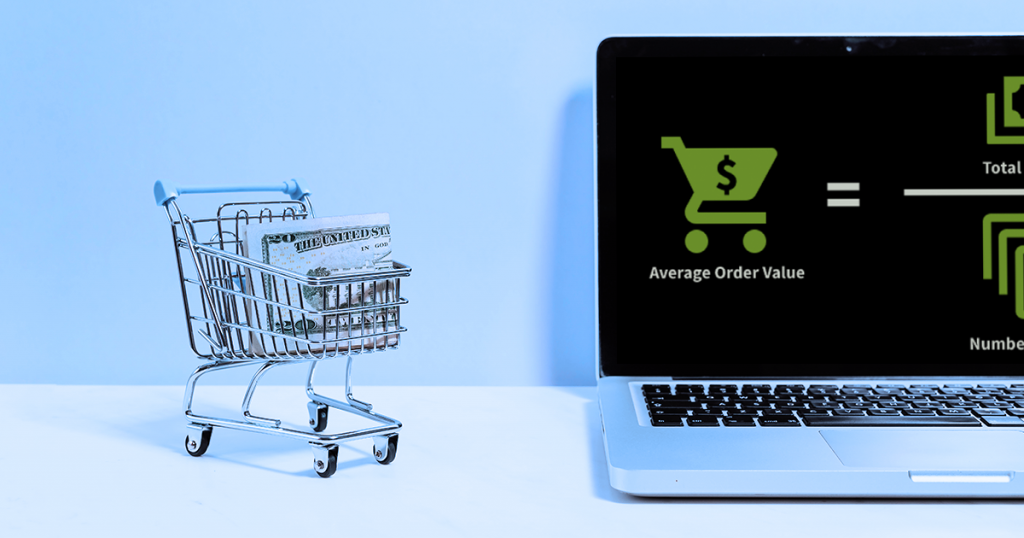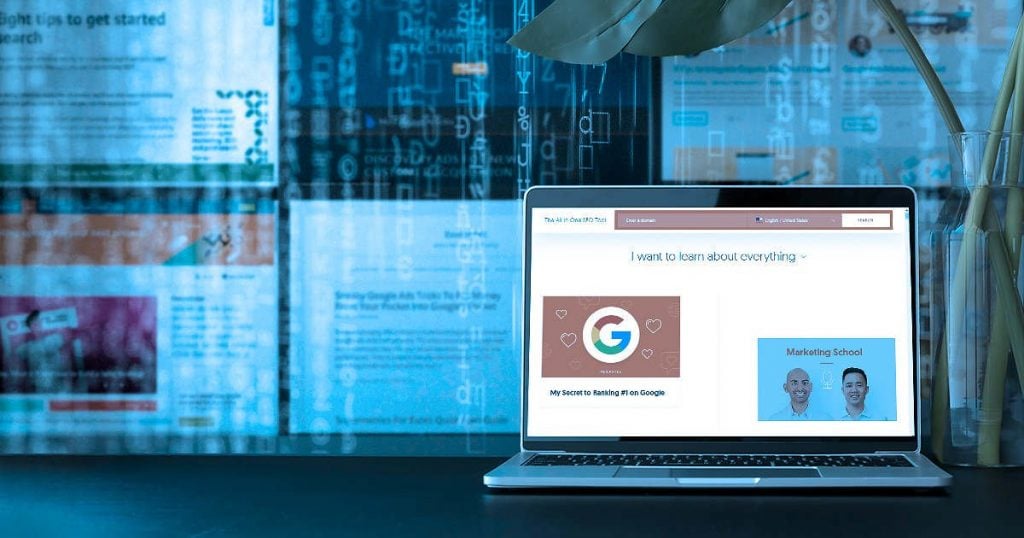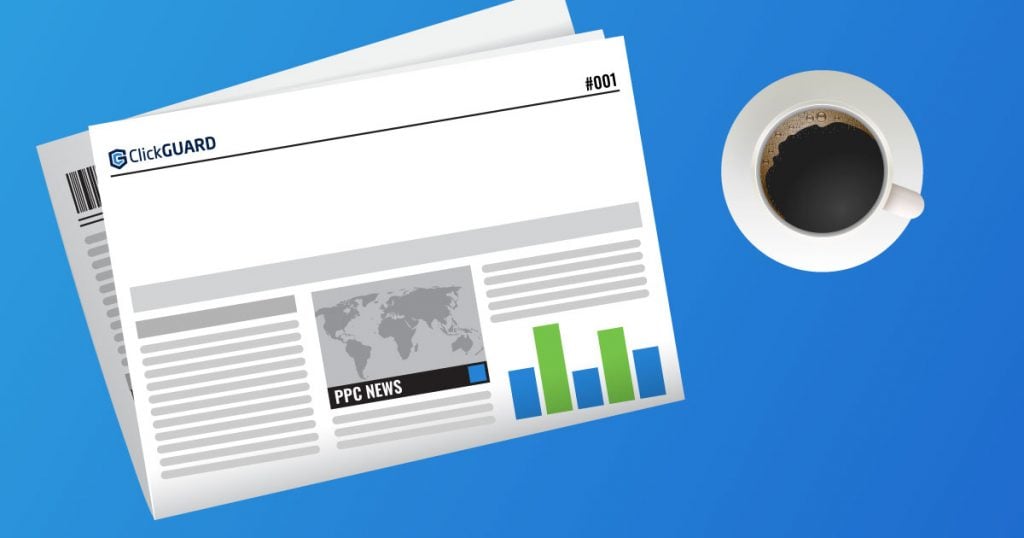There is certainly a place in your overall marketing plan for drumming up more brand loyalists within your customer base. Selling more to your current customers in addition to acquiring new customers is a marketing strategy that saves you a lot on marketing and advertising costs. Essentially, a quick AOV calculation is the basis for a steady, healthy revenue boost.
“What is AOV?”, you might ask? We’ll also give you some examples of AOV and explain how to optimize it.
What Is AOV?
Let’s dig right in with a definition of the Average Order Value (AOV). Average order value is the average dollar amount that a customer spends in your online store over a specific timeframe.
We’re making it simple by giving you the following AOV calculation steps:
Step 1 — Pick a timeframe.
Step 2 — Divide the total revenue of your store in that timeframe by the total number of orders within the same timeframe.
To put it into mathematical terms:
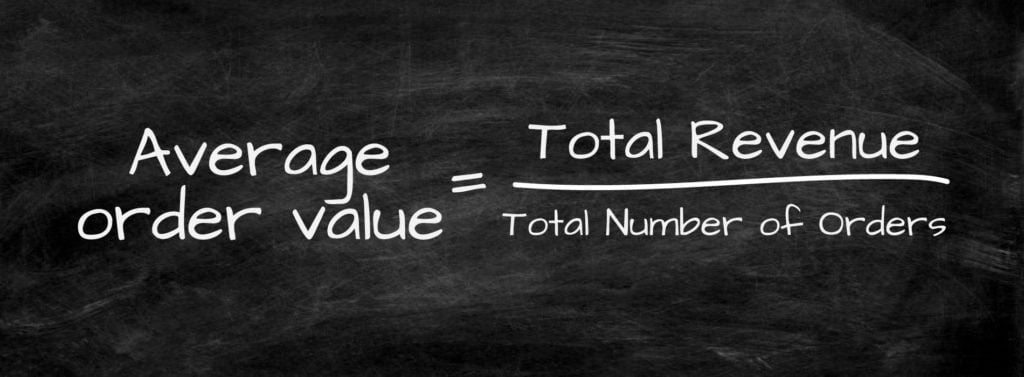
Before your excitement gets the best of you, you might want to consider that this formula doesn’t take your marketing costs into account.
To make things clear, let’s look at a more specific example. Let’s say that you’re selling t-shirts and you had 5 orders in one week. The orders totaled $20, $40, $20, $60, and $20. Your weekly total is $160. Divide it by the 5 orders and the AOV calculation tells you that your Average Order Value is $32.
Why worry about AOV sales? Simply put, it allows you to earn more money from the same number of customers. In other words, an AOV calculation can give you a little more green in your revenue stream (provided that you use it as a metric to improve your current strategy, of course).
AOV Calculation Examples to Keep in Mind
Do you know how much your average customers are paying? Do you know whether they’re buying multiple items or if they’re buying the lowest dollar item on your site?
Let’s take a look at a couple of examples of what two online store owners learned about AOV marketing.
Example #1 Joe’s Hawaiian Sunglasses
Joe has an online store where he sells Hawaiian sunglasses in 8 different styles. Joe has been concerned that he’s investing too much in advertising, and it’s affecting his profit margin. To learn more about his average sales, Joe tracked his sales for three months.
Joe sold 1,200 pairs of sunglasses and his sales over that period were $40,000. A quick AOV calculation shows that his average sale is just over $33.
Example #2 Cindy’s Custom Coffee Mugs
Cindy sells custom coffee mugs personalized with a customer’s name and image. She generally sells about 500 mugs every month and her average sales are around $5,000, but she doesn’t really track how many she sells on a regular basis. Cindy has also noticed that she sells more mugs around Mother’s Day, Father’s Day, and during the holiday season.
Lessons Learned about AOV Calculation
With an AOV of $33, Joe decided to invest more of his advertising budget on his highest dollar sunglasses and run specials during late spring and early summer when people are planning for vacations. He theorized that by promoting a higher-priced item during the prime season for buying sunglasses, he could increase his AOV. His first run was a success, and he was able to increase his AOV to $45 which is an increase of $12 per order.
Cindy’s AOV calculation is $10 per order, but she isn’t aware of that because she doesn’t track it. If she made the decision to invest more in advertising for a higher-priced mug, she could invest more in advertising around the holidays where her sales are higher. This would increase her AOV and ultimately, her profits. She could even run specials for each holiday with a special mug just for that occasion.
Remember that AOV calculations don’t factor into gross profit or profit margins. Still, these examples should make it clear that by calculating AOV, it’s easier to make prudent marketing decisions. An AOV calculator tells you whether your sales are in line with your marketing costs and whether customer orders will sustain your company.
Could you use AOV calculations to double or triple your revenue? It’s not out of the realm of possibility, and it won’t hurt to try. By devoting a few minutes to AOV marketing, you get a high-level perspective of how to manage your advertising budget.
Now that you understand how AOV marketing can improve your bottom line, let’s go over some AOV optimization techniques.
AOV Optimization Techniques You NEED to Know
It takes money to make money. For that reason alone, by increasing AOV sales you will increase your profits and decrease the cost of doing business. That gives you more money for marketing and outreach efforts to grow your business even more.
Here are 10 awesome AOV tips to keep in mind when you want to make sure that your eCommerce is healthy from a financial standpoint:
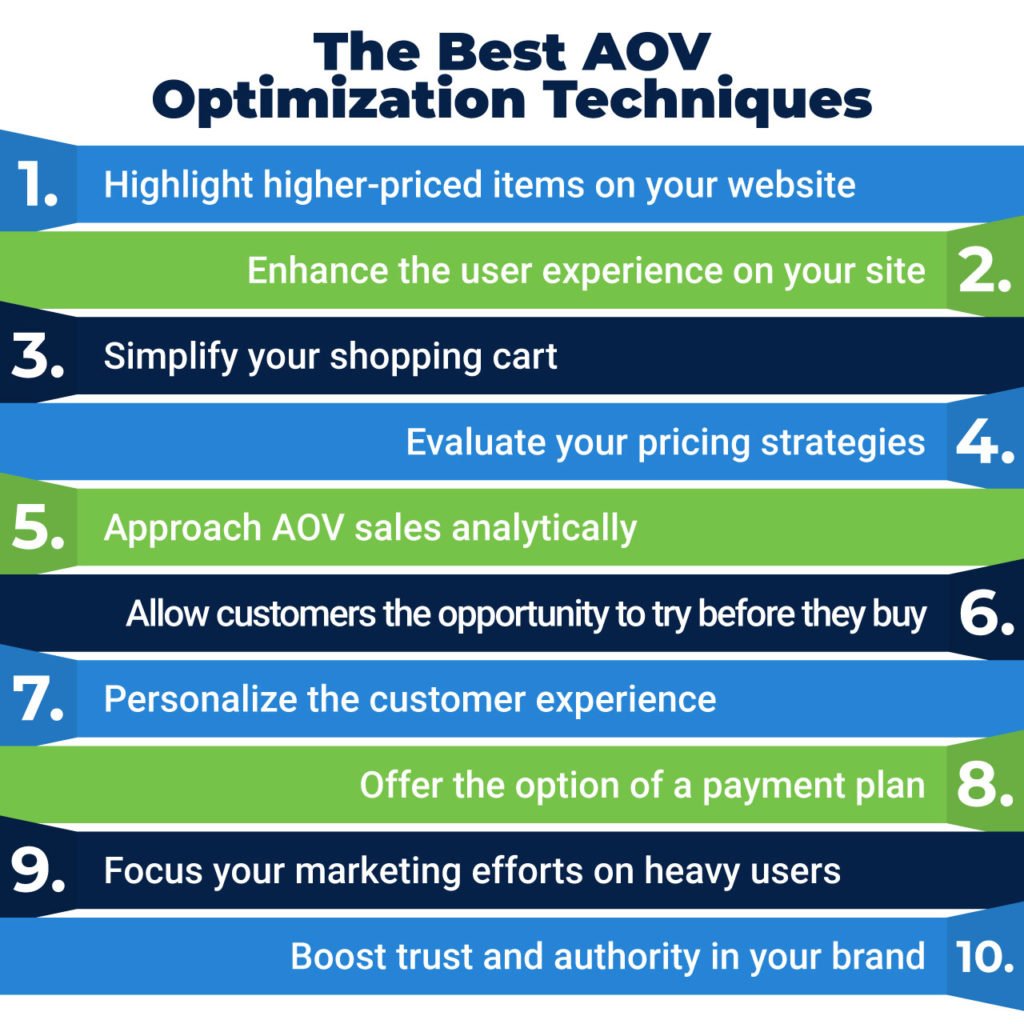
Highlight higher-priced items on your website
Do you want to sell more of your high-ticket items? Leverage web design with the use of color and layout to make big-ticket items stand out. Highlight their features and value for the price.
Enhance the user experience on your site
Study customer behavior and user experience and use data to simplify navigation. Test your pages to ensure fast loading times, and make sure your site is optimized for mobile.
Simplify your shopping cart
If possible, shorten the steps customers need to check out. Make it easy and intuitive to reduce incidences of shopping cart abandonment.
Evaluate your pricing strategies
Do you know what customers are willing to pay for your products? Test out your pricing strategies until you get an attractive price for customers that also yields the greatest profit. A good rule of thumb is to gradually increase your prices until you get pushback or your sales start to decline. It also pays to check out the competition’s pricing strategies.
Approach AOV sales analytically
With a focus on your top-sellers, take a deeper dive into why customers like them so much and how they use them. Determine if anything is standing in their way from buying them. Think about things like cross-selling, offering a subscription plan, or offering a discount for larger quantities to increase AOV. As always, make one change at a time, test your theory, and measure your results.
Allow customers the opportunity to try before they buy
Once your customer has your product in hand and starts using it, it already has more value. Once they grow to love it and rely on it, they’ll be more willing to pay a little more for those higher-priced items. You’re likely to get more referrals too!
Personalize the customer experience
More and more companies are forced to compete on the customer experience. As businesses have stepped up their games to provide the best customer experience, customers have come to expect nothing less. Personalization is one way to let customers know that you know who they are and why your products are best suited for them. A personal approach guides them straight to your checkout page.
Offer the option of a payment plan
Before a customer decides to buy, they have to consider how it fits into their budget. Make it easier for them to make that decision to make a higher purchase by giving them the option of paying for their items over time. Increase the price slightly for those who take you up on the offer of a payment plan. Many customers will pay a bit more for the convenience, and you still get the benefit of increased AOV.
Focus your marketing efforts on heavy users
There are lots of dynamics to consider when developing profiles of your target audience. A strategy you might not have considered is going after customers that rely heavily on your products.
Boost trust and authority in your brand
Boosting your brand with user ratings and reviews creates trust and credibility in your brand. It’s an indirect way to increase AOV sales.
Remember that an AOV calculation is just one of many metrics that inform your marketing decisions. AOV tracking will give you a better idea of how well your store is performing. Also, be sure to calculate your current AOV for various timeframes to determine a baseline AOV, especially if your business is subject to seasonal variations. From there, you can make informed decisions on how to increase your AOV.
In the interest of keeping your budget down, AOV marketing is a strategy that requires very little investment of your time, and by increasing AOV, you’ll have greater flexibility in your marketing budget. What’s more, you’ll be able to provide a better customer experience, enjoy greater profits, and increase brand loyalty.
With the knowledge that you’ve gained about AOV, you can begin calculating it and start leveraging it as soon as today. To learn more about AOV and other marketing strategies for eCommerce and other types of businesses, ClickGUARD is an industry-leading resource, so check out our blog regularly.
